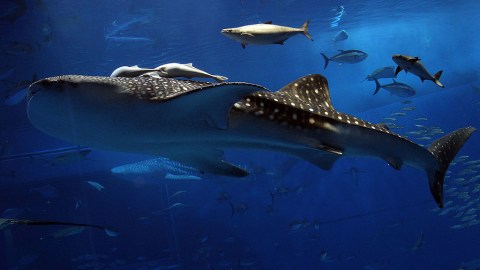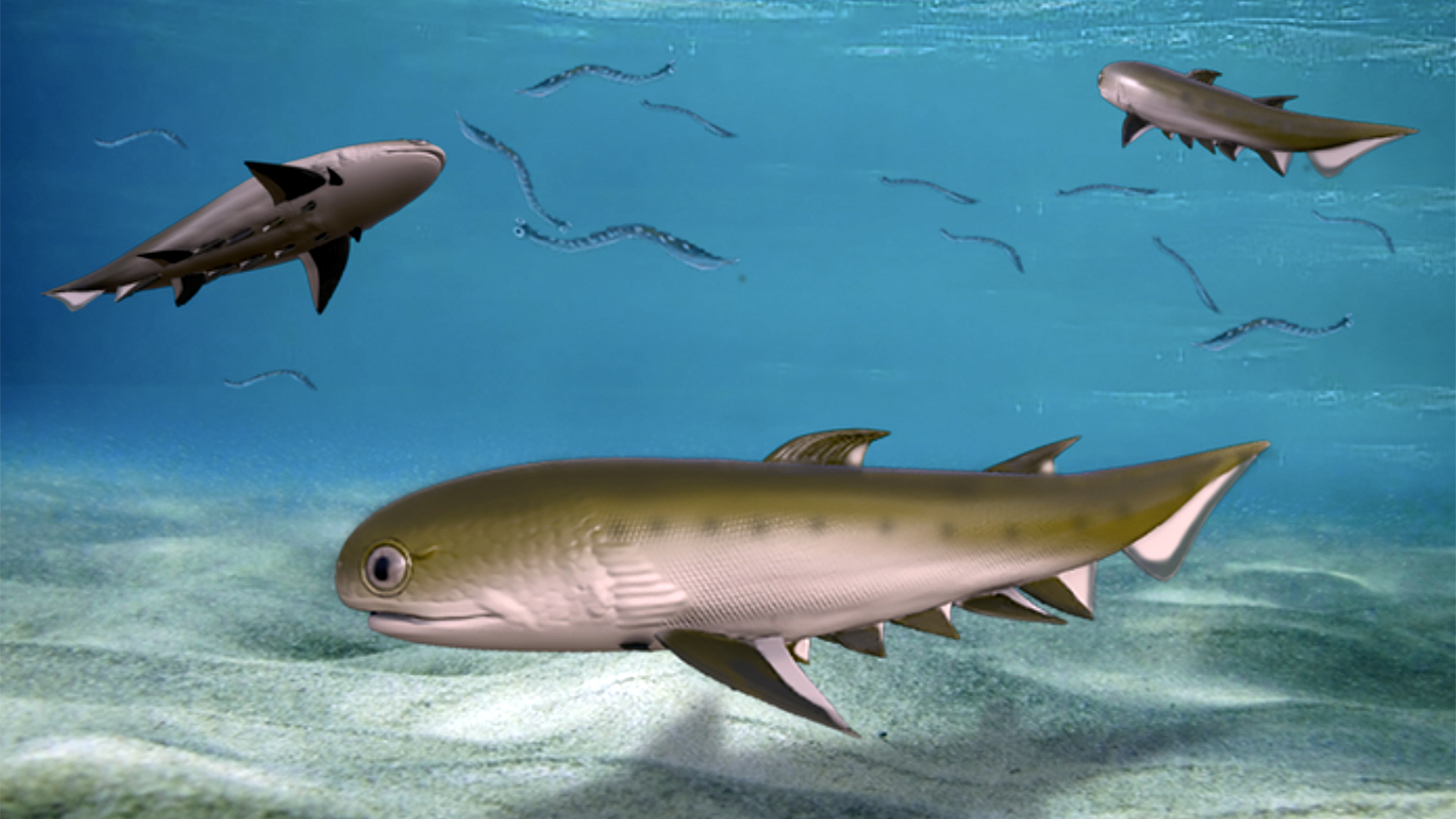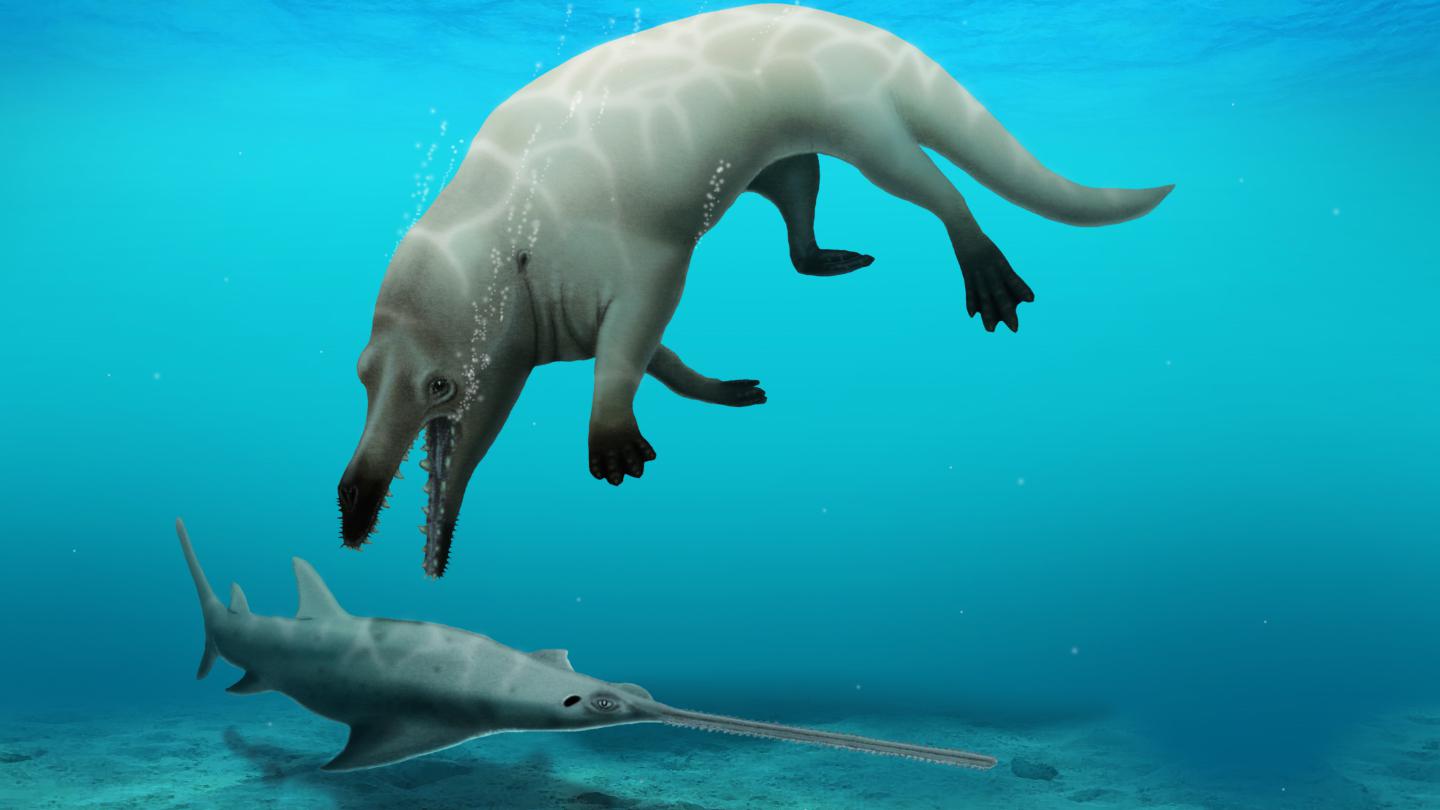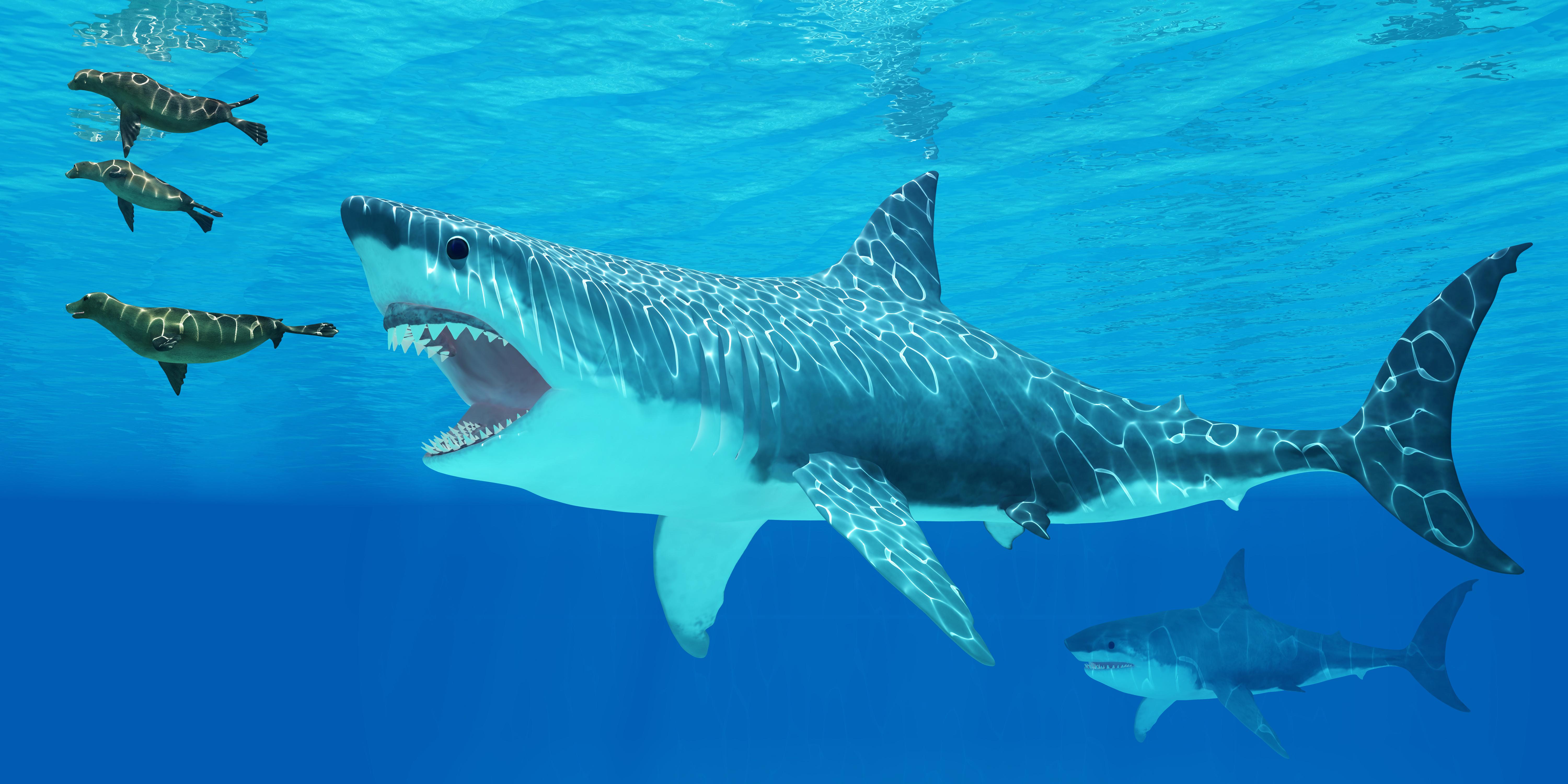Giant whale sharks have teeth on their eyeballs

Photo by Koichi Kamoshida/Getty Images
- Japanese researchers discovered that the whale shark has “tiny teeth”—dermal denticles—protecting its eyes from abrasion.
- They also found the shark is able to retract its eyeball into the eye socket.
- Their research confirms that this giant fish relies on vision more than previously believed.
Cape Cod residents and tourists received a stark warning ahead of the July 4th weekend: beware of great white sharks. This isn’t a complete outlier, given that the danger of these sharks has increased in recent years. Sharks are having difficulty finding food sources further out at sea, and so every year they’ve been encroaching upon the Cape’s borders in search of seals.
That sobering story is nowhere near the top of shark news this week, however. In yet another indication that the planet is tiring of us humans, it has been discovered that the world’s biggest shark has teeth all over its eyeballs.
In the exceptionally named research article, “Armored eyes of the whale shark,” a team of researchers from Japan’s Okinawa Churashima Research Center discovered that these beastly predators evolved a unique defense mechanism for their vision: dermal denticles.
These denticles are nothing new. Similar v-shaped scales cover shark skin. Structurally, they’re akin to tiny teeth. This feature helps sharks decrease turbulence and drag while gliding through the ocean, making them an even more fearsome fish—a tall order for a shark that grows up to 62 feet in length.
Whale shark mouths are formidable, featuring over 300 rows of tiny teeth. Their teeth play no role in feeding, however: whale sharks are one of three shark species that filter-feed. Their diet is predominantly plankton, krill, jellyfish, sardines, and anchovies. They’ll consume small tuna and squids that cross their path. Otherwise, these mammoth swimmers are content taking in what comes.

A. Anterior view of the whale shark, showing the locations of the eye (arrows). Note that whale shark eye is well projected from the orbit. Photo was taken in the sea near Saint Helena Island. B. Close-up view of the left eye of a captive whale shark (Specimen A).
Considering their dietary habits, vision was not thought be that important for whale sharks. This species is unique for not having any sort of eyelid or protective mechanism—until now, that is. Not only do dermal denticles protect their vision, the team, led by Taketeru Tomita, discovered that whale sharks have another trick:
“We also demonstrate that the whale shark has a strong ability to retract the eyeball into the eye socket.”
The researchers studied these massive sharks in an aquarium, offering them a rare look at one of the ocean’s largest fish (They also studied deceased sharks). The eye denticle is different from the rest of the scales covering their body: they are designed for abrasion resistance, not ocean stealth.
“The covering of the eye surface with denticles in the whale shark is probably useful in reducing the risk of mechanical damage to the eye surface.”
Despite their massive size, whale sharks have relatively small eyes, measuring less than 1 percent of their total length. Their brain’s visual center is also relatively small. With this discovery, the researchers realized vision plays a more important role than previously assumed.
“The highly protected features of the whale shark eye, in contrast to the traditional view, seems to suggest the importance of vision in this species. Interestingly, Martin showed that whale shark eyes actively track divers swimming 3–5 m away from the animal, suggesting that vision of the whale shark plays an important role in short-range perception.”
While you likely won’t bump into a whale shark while swimming just off the coast, this is yet another reminder of how species adapt to their environment.
—
Stay in touch with Derek on Twitter, Facebook and Substack. His next book is “Hero’s Dose: The Case For Psychedelics in Ritual and Therapy.”





